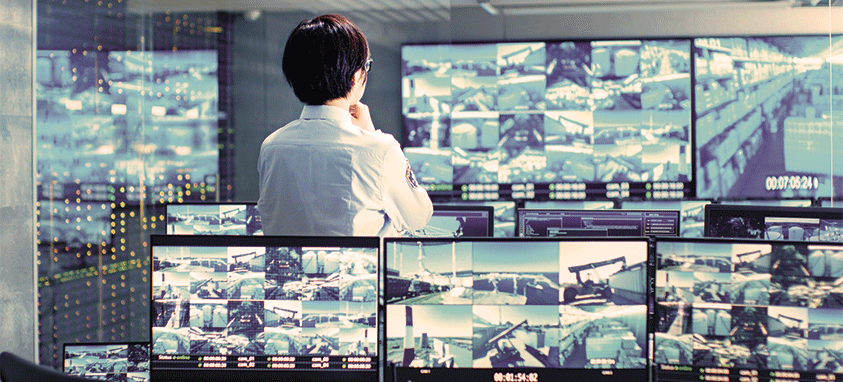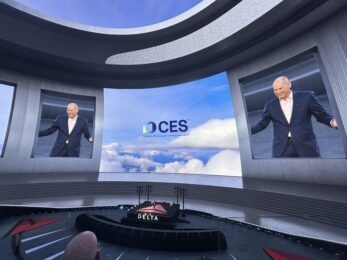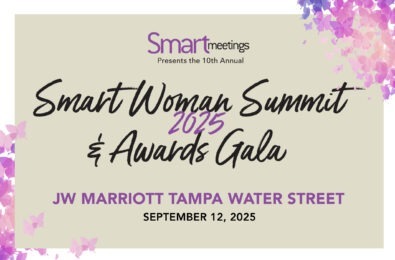A safety expert from Washington, D.C., shares best practices for protecting attendees
Within minutes of a gunman entering Washington Navy Yard on a Monday morning in September 2013, Walter E. Washington Convention Center, 3 miles away, was already on high alert. That is because the 2.3 million-square-foot facility in the nation’s capital is part of the Mayor’s Special Events Task Force Group, which includes local law enforcement and Federal Emergency Management Agency, and has a direct line alerting staff of incidents that occur before they hit the social media boards.
Doors were locked, the planner managing an event on site was notified, and the situation was monitored until an hour later, when it was confirmed that the shooter, who had taken the lives of 12 people that day, was dead and had acted alone. Most of the attendees were not aware of the emergency until they heard about it on the news.
A Smart Meetings poll at the end of 2017 showed that security has taken on an even greater sense of urgency for event planners. Almost half of respondents (43 percent) said they provided additional security in 2017, compared to previous years. But what is the best way to keep attendees safe?
We asked for advice from Greggory O’Dell, president and CEO of Events DC, which in addition to the convention center, operates Robert F. Kennedy Memorial Stadium, DC Armory, Carnegie Library at Mt. Vernon Square and Gateway DC event pavilion. These facilities regularly host current and former presidents, and have been the site of two international security summits. In fact, Events DC hosts 1,000 groups a year, welcoming 1 million people through its doors annually. O’Dell has focused on keeping people safe throughout his entire hospitality career.
He confirmed that since September 2011, security has remained high on the list of priorities planners ask about when touring a venue. In many cases, it beats out perennial favorites—cost, aesthetics and service.
“Unfortunately, people react to the most recent incident to drive decisions,” he says. That is why when a school shooting hits the news, it raises the level of interest, and he gets more questions about safety measures. But if none have occurred for a while, other factors rise to the top of the priority list. “It really is based on the national security environment,” he says. “And right now, security is a major priority.”
The Conversation
So how does O’Dell suggest having “the conversation?” He stresses that every event is different, so there is no set program. So, he tries to understand the goals of the individual group and its specific concerns. He asks about:
- Number of people
- Profile of speakers and VIPs
- Plans to move people between facilities
He pairs that with an understanding of the other groups in the building during those dates and how that interaction will work for all parties. Then he comes up with a two-pronged approach to the internal and external steps required to keep people out of harm’s way.
He assures each group that because of his relationship with federal and local law enforcement, any incident—ranging from a terrorist attack to an electricity outage—will be dealt with appropriately and efficiently. But doing so requires a team effort with the visiting group. He shares his chain of command, and roles and responsibilities of his personnel onsite, and requests the same from the planner.
“We need to know who will be the decision-maker if something happens,” he says. He shares emergency evacuation procedures for the building. A gathering place is agreed upon if the building must be emptied for any reason. “Communication is your best friend,” he says.
The Balance
When the call came in about the shooter in Washington Navy Yard, O’Dell had to act quickly, but did not want to alarm guests, since he didn’t know all the facts. He fortified the building and then notified the direct point of contact for the event. After that, only those with badges were allowed inside.
That same desire to assure without scaring people drives decisions about what measures to include in an event’s protocols. Everything from airport-style security screenings to hand magnetometer scans and bag checks are more frequently requested, he says. Similarly, the decision about how many guards to hire and whether they will be armed or unarmed varies, based on the circumstances. A bomb-sniffing dog walking the floor with a handler can also have a reassuring effect, as was seen at IMEX America 2017 following the shooter incident in Las Vegas.
Those measure can come at a price. “Let’s be real; there is a cost factor,” O’Dell points out. And seeing armed guards can make some people uncomfortable, dampening the welcoming feeling, even while it increases the sense of safety. That is why he considers the type of group when giving advice. The risk factor for a corporate conference where everyone preregisters is different than for a consumer gate event such as an auto show, where no one knows who will be walking into the building.
One of the most effective security measures is one few people see. Modern convention centers include robust 24/7 surveillance monitoring systems, and Walter E. Washington has an elaborate one. With two command centers and the ability to see all parts of the building with the touch of a button, very little goes unnoticed.
“Our general response camera system is one of our best means of control,” O’Dell says. But at the same time, it is not one he explains in detail. “We want to be discrete,” he adds.
The Best Defense
Walter E. Washington is a beautiful facility, glass-faced and conveniently located in the middle of a busy neighborhood. Those factors make it a popular place to hold a meeting, but a challenging place to monitor security.
Traffic is constant on the adjacent streets. No sea of parking separates it from the rest of the world. Inside, attendees need to be able to move freely through the building. A well-trained staff knows what to look for, but not everything can be prevented. That is why having emergency protocols in place and connections to first responders can mean the difference between an orderly response and chaos.
“Security is all about protecting lives,” O’Dell says. You can’t control everything, but like everything else in the meetings industry, you can try to think of as many possible challenges as possible before the first person walks into the building, and then be ready to act if something unexpected happens.




